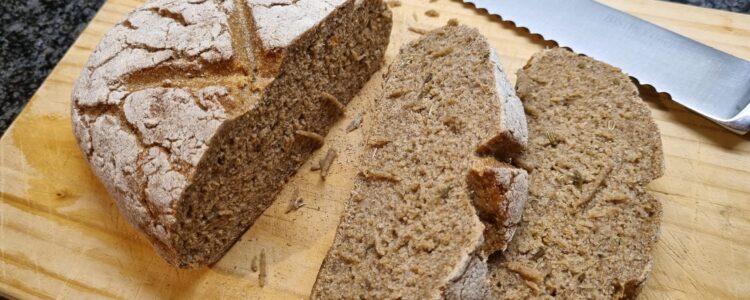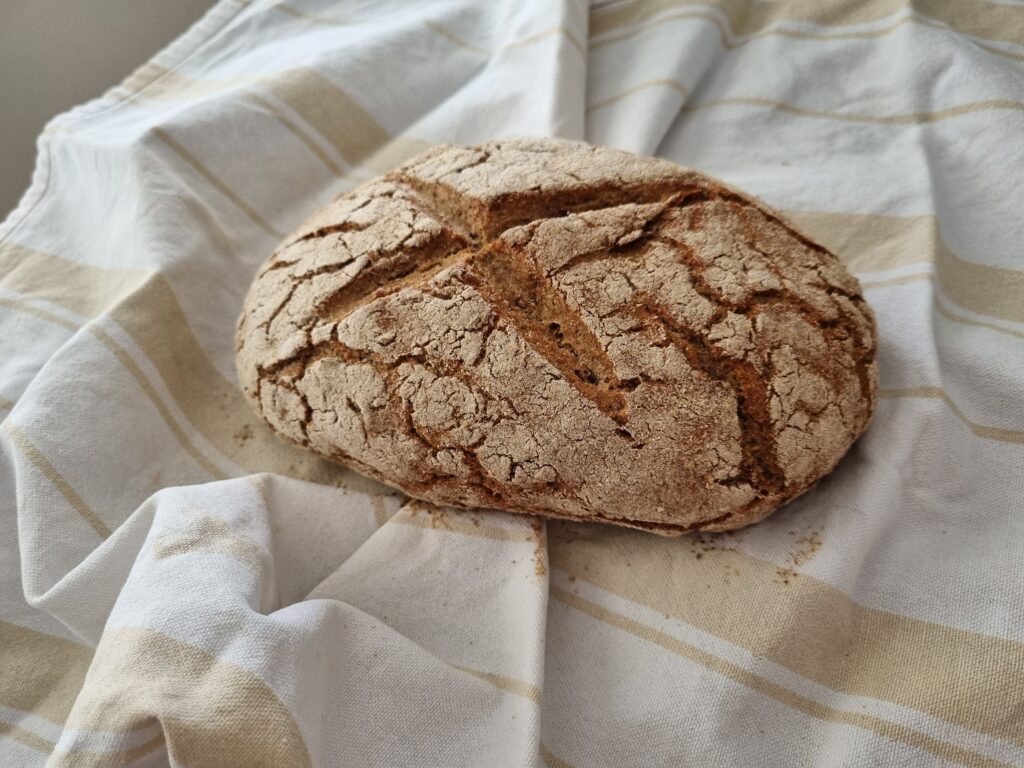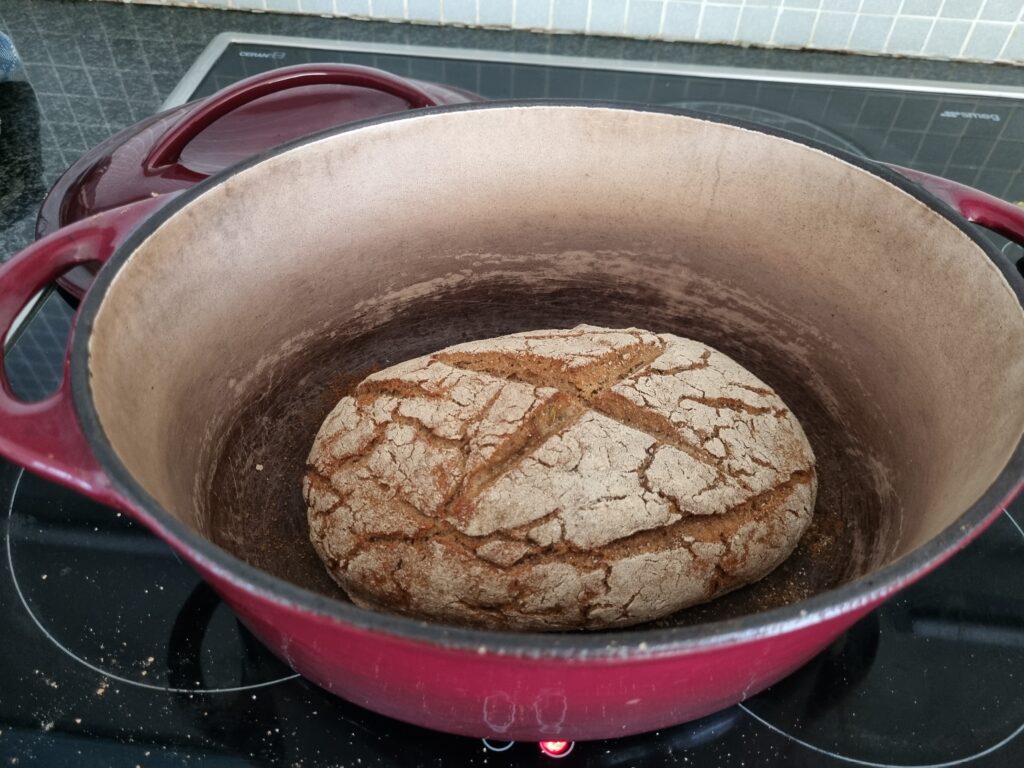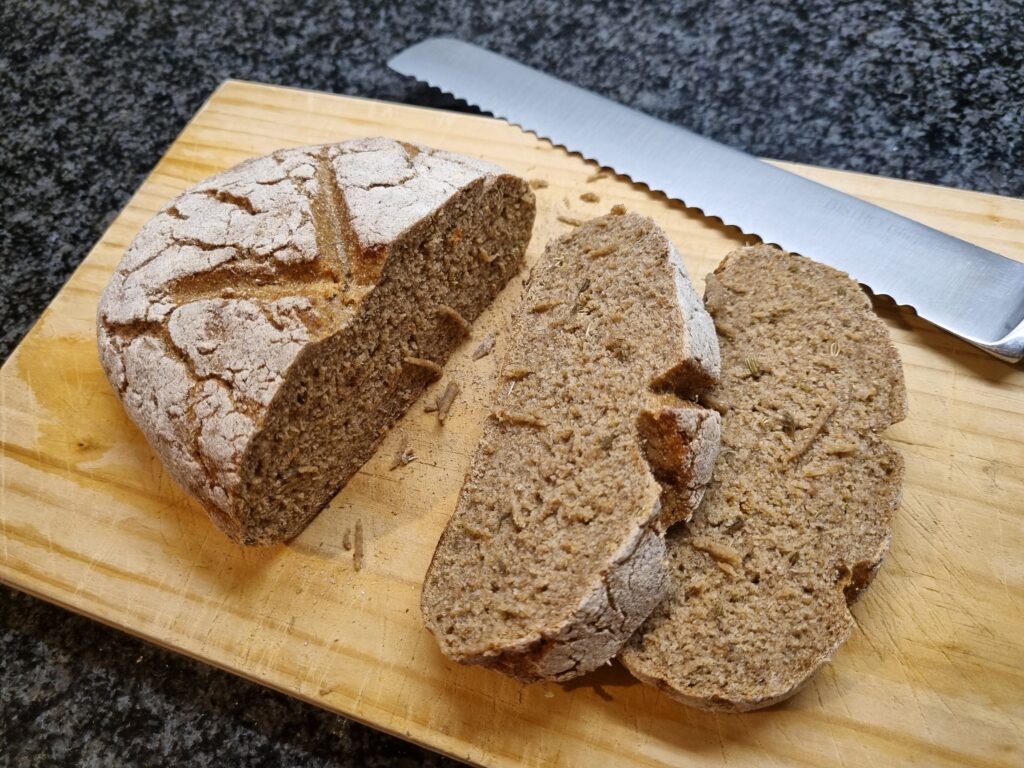You don’t see many homemade 100% rye bread loafs around, mostly because rye bread is denser and heavier than bread we’re used to enjoying.
Rye bread has a distinct flavour. It has an earthy and nutty taste, and is quite dense giving it a satisfying chewiness so you don’t overeat.
There’s many recipes around for rye bread, often with extra ingredients like other flours, molasses and even cocoa powder to add the dark colour and flavour. Traditionally, caraway seeds are added for a very distinctive flavour.
I think rye bread is deliciously filling, satisfying and tasty without the additions of other ingredients.
Great for Your Metabolism
The Metabolic Balance Program calls for 100% rye bread under it’s guidelines. This is due to its unique impact on your metabolism. As a Metabolic Balance Practitioner, I love supporting my clients with recipes and ideas. This led me to creating a simple, quick and healthy bread recipe for my clients to enjoy.
Why Rye?
- Unlike fast carbohydrates (high GI), wholemeal rye bread allows your body to slowly break down the glucose in the starch, leading to a slower rise in insulin levels which then improves your insulin sensitivity. This gradual process prevents sudden spikes followed by crashes in blood sugar levels, often resulting in increased hunger.
- Wholemeal rye bread gives a greater sense of satiety because of its high fibre content, so you feel fuller for longer.
- Rye contains many more micronutrients like B vitamins than wheat flour.
- It’s rich in potassium which your body needs for healthy nerves, muscle and bones.
- Rye is a type of prebiotic so it’s great for gut health, feeing those microbiome.
Homemade Rustic 100% Rye Bread
Here’s what you need:
- 1.5 teaspoons (4 grams) of instant or dry yeast
- 1 cup (250ml) of hot water (around 43 degrees works best for activating the yeast)
- 290 grams of wholemeal rye flour
- 1 teaspoon of fine salt (don’t reduce the salt thinking you’re being healthy as it binds to the gluten and helps hold the bread together)
Here’s what you do:
- Pre-heat the oven to very hot. Our oven only goes to around 300 degree C, and that is enough.
- Pre-heat your cast iron or casserole dish (with lid).
- Measure out the hot water in a jug and sprinkle in the yeast. It will sink to the bottom and rise again as it activates and dissolves.
- Let the yeast mixture stand for 10 minutes.
- In a mixing bowl, mix the flour and salt together.
- Make a well in the flour and pour in the yeast mixture.
- Stir until it comes together to form a ball. It will be quite moist.
- Cover the bowl with plastic or a tea towel and let it stand for two hours. It will rise slightly.
- Sprinkle extra rye flour onto the bench, scoop out the bread dough onto the bench and sprinkle with more rye flour.
- Form the dough with your hands into a bread shape that will fit in your oven dish. Don’t knead the bread, simply form it into the shape you want. Mark the top of the load with a cross with a knife before it goes into the oven – it evens the cooking.
- Carefully take the hot pan out of the oven, remove the lid, and sprinkle a little rye flour on the base of the pan. Place the bread dough into the pan and put the lid back on.
- Bake in your oven for 20 minutes – oven temperatures vary so adjust length of time accordingly.
- Cool on a wire rack for 20-30 minutes before slicing.
Tip – the bread is cooked when it makes a hollow sound when tapped on the bottom.
Toast – because this bread is dense and does make great toast
Freezer – place slices of the bread between baking paper and put in a bag in the freezer, so you can pull out a slice when needed.
Enjoy!
Catherine x
P.S. If you’d like to jump on my email list to receive regular healthy tips and recipes, then click here – Yes please!





2 comments
Size of casserole please
Hi John
Any size casserole dish will work, so long as it’s big enough to hold the dough. I like using a cast iron one as they really hold the heat, but a ceramic dish will do the same thing. With the lid on, it helps to evenly distribute the heat around the loaf while cooking.